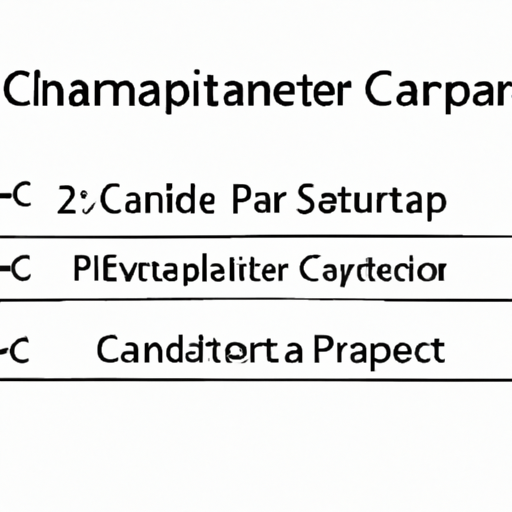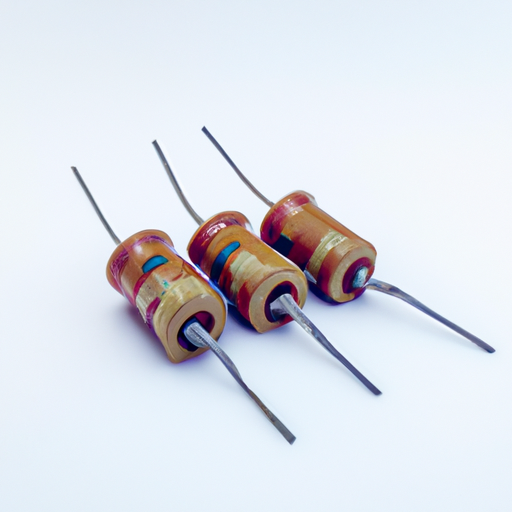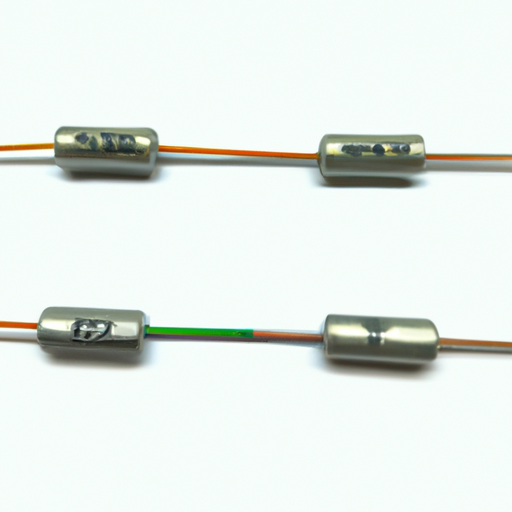What are the product standards for capacitor formulas?
What are the Product Standards for Capacitor Formulas?
I. Introduction
Capacitors are fundamental components in electronic circuits, serving as energy storage devices that can release energy when needed. They play a crucial role in various applications, from power supply smoothing to signal coupling and filtering. Given their importance, the manufacturing of capacitors is governed by strict product standards to ensure safety, reliability, and performance. This article aims to explore the product standards for capacitor formulas, detailing their significance, key standards, testing methods, challenges, and future trends.
II. Understanding Capacitors
A. Basic Principles of Capacitors
A capacitor is an electronic component that stores electrical energy in an electric field. It consists of two conductive plates separated by an insulating material known as a dielectric. When voltage is applied across the plates, an electric field develops, allowing the capacitor to store energy. The primary function of capacitors is to store and release electrical energy, making them essential in various electronic applications.
There are several types of capacitors, including:
1. **Ceramic Capacitors**: Known for their small size and stability, ceramic capacitors are widely used in high-frequency applications.
2. **Electrolytic Capacitors**: These capacitors offer high capacitance values and are commonly used in power supply circuits.
3. **Film Capacitors**: Made from thin plastic films, these capacitors are known for their reliability and low loss characteristics.
B. Key Parameters of Capacitors
Understanding the key parameters of capacitors is essential for selecting the right component for a specific application. The main parameters include:
1. **Capacitance**: Measured in farads (F), capacitance indicates the amount of charge a capacitor can store.
2. **Voltage Rating**: This parameter specifies the maximum voltage a capacitor can handle without breaking down.
3. **Tolerance**: Tolerance indicates the allowable deviation from the nominal capacitance value, expressed as a percentage.
4. **Temperature Coefficient**: This parameter describes how capacitance changes with temperature, which is crucial for applications in varying thermal environments.
III. Importance of Product Standards
Product standards play a vital role in the manufacturing of capacitors. They ensure that capacitors are safe, reliable, and compatible with other components in electronic systems. The importance of product standards can be summarized as follows:
A. Ensuring Safety and Reliability
Adhering to established standards helps manufacturers produce capacitors that meet safety requirements, reducing the risk of failures that could lead to hazardous situations.
B. Facilitating Compatibility and Interoperability
Standards ensure that capacitors can work seamlessly with other electronic components, promoting interoperability across different devices and systems.
C. Enhancing Performance and Longevity
By following product standards, manufacturers can enhance the performance and lifespan of capacitors, leading to more efficient and durable electronic products.
D. Regulatory Compliance and Market Access
Compliance with international and national standards is often a prerequisite for market access, enabling manufacturers to sell their products globally.
IV. Key Product Standards for Capacitors
Several key product standards govern the manufacturing and testing of capacitors. These standards can be categorized into international, national, and industry-specific standards.
A. International Standards
1. **International Electrotechnical Commission (IEC)**:
- **IEC 60384**: This standard covers fixed capacitors for use in electronic equipment, specifying requirements for safety, performance, and testing.
- **IEC 61071**: This standard pertains to capacitors used in power electronics, focusing on their performance under various operating conditions.
2. **Institute of Electrical and Electronics Engineers (IEEE)**:
- **IEEE 18**: This standard outlines the measurement of capacitance, providing guidelines for accurate testing methods.
B. National Standards
1. **American National Standards Institute (ANSI)**: ANSI develops standards that ensure the quality and safety of capacitors used in the United States.
2. **Underwriters Laboratories (UL)**: UL standards focus on safety and performance, ensuring that capacitors meet rigorous testing requirements.
C. Industry-Specific Standards
1. **Automotive Standards**: Standards such as AEC-Q200 ensure that capacitors used in automotive applications can withstand harsh conditions and meet reliability requirements.
2. **Aerospace Standards**: MIL-PRF-39014 is a military specification that outlines the performance requirements for capacitors used in aerospace applications.
V. Testing and Quality Assurance
To ensure that capacitors meet product standards, manufacturers employ various testing methods and quality assurance processes.
A. Testing Methods for Capacitors
1. **Capacitance Measurement**: This method involves measuring the capacitance value to ensure it falls within the specified tolerance range.
2. **Insulation Resistance Testing**: This test evaluates the insulation properties of the capacitor, ensuring it can withstand high voltages without leakage.
3. **Dielectric Strength Testing**: This test assesses the capacitor's ability to withstand high voltage without breaking down, ensuring safety during operation.
B. Quality Assurance Processes
1. **Incoming Material Inspection**: Raw materials used in capacitor manufacturing are inspected to ensure they meet quality standards.
2. **In-Process Quality Control**: Continuous monitoring during the manufacturing process helps identify and rectify any issues that may arise.
3. **Final Product Testing**: Before capacitors are shipped, they undergo rigorous testing to ensure they meet all specified standards and performance criteria.
VI. Challenges in Meeting Product Standards
While product standards are essential, manufacturers face several challenges in meeting these requirements.
A. Variability in Raw Materials
The quality of raw materials can vary, affecting the performance and reliability of capacitors. Manufacturers must ensure consistent quality to meet standards.
B. Technological Advancements and Evolving Standards
As technology advances, product standards may evolve, requiring manufacturers to adapt their processes and products to remain compliant.
C. Cost Implications of Compliance
Meeting product standards can involve significant costs, including testing, certification, and quality control processes, which can impact the overall pricing of capacitors.
D. Globalization and Differing Regional Standards
Manufacturers operating in multiple regions must navigate differing standards, which can complicate compliance and market access.
VII. Future Trends in Capacitor Standards
The capacitor industry is evolving, and several trends are shaping the future of product standards.
A. Increasing Demand for Miniaturization and Efficiency
As electronic devices become smaller and more efficient, there is a growing demand for capacitors that can deliver high performance in compact sizes.
B. Development of New Materials and Technologies
Innovations in materials science are leading to the development of new capacitor technologies, which may require updated standards to ensure safety and performance.
C. Sustainability and Environmental Considerations
With increasing awareness of environmental issues, there is a push for sustainable manufacturing practices and materials in capacitor production.
D. The Role of Digitalization and Smart Technologies
The integration of digital technologies in manufacturing processes is enhancing quality control and compliance monitoring, making it easier for manufacturers to meet product standards.
VIII. Conclusion
Product standards for capacitors are crucial for ensuring safety, reliability, and performance in electronic applications. By adhering to these standards, manufacturers can produce high-quality capacitors that meet the needs of consumers and industries alike. As the industry continues to evolve, it is essential for manufacturers and stakeholders to prioritize compliance and innovation to keep pace with changing technologies and market demands.
IX. References
1. International Electrotechnical Commission (IEC) Standards
2. Institute of Electrical and Electronics Engineers (IEEE) Standards
3. American National Standards Institute (ANSI) Guidelines
4. Underwriters Laboratories (UL) Safety Standards
5. Automotive Electronics Council (AEC-Q200) Specifications
6. Military Specifications (MIL-PRF-39014) for Aerospace Applications
This comprehensive exploration of product standards for capacitor formulas highlights their significance in the electronics industry and underscores the importance of compliance and innovation in manufacturing practices.





